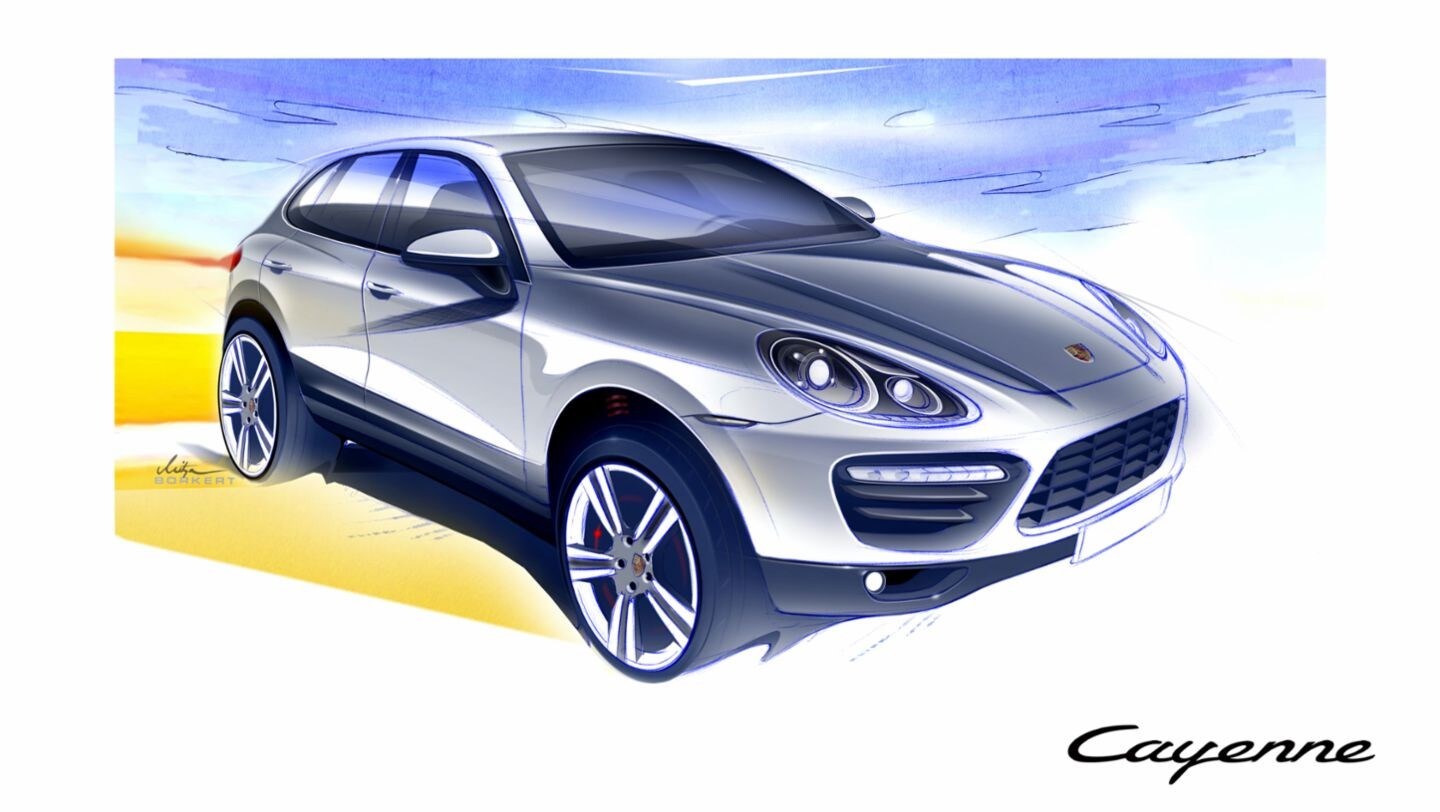
Known among enthusiasts as the “Third Porsche,” the Cayenne has given great success to the Porsche name. It has proven itself as an excellent and robust SUV since it was launched back in 2002. Handsomely designed at its birthplace in Leipzig, the mid-size luxury crossover is the manifestation of Ferry Porsche’s dream off-road vehicle for the German car manufacturer.
Its second iteration has made headlines as “The King of Driver-Friendly SUVs” from publications such as Moneyweek and TopGear. And it’s no surprise because Porsche spared no expense in developing the second-gen Cayenne.
Paving the Way for the New Generation
Known internally as E1, the first Cayenne came after the legendary 911 and the mid-engined Boxster–thus the nickname “The Third Porsche.” It was made under the creative direction of then head of design, Harm Lagaay. The Cayenne E1 shared design elements with its sister model, the Volkswagen Touareg, and it came in two variants both equipped with V8 engines–the Cayenne S and Cayenne Turbo.
After Lagaay left, Michael Mauer took over the design department of the German automaker. Mauer’s aim was to reinvent the Cayenne without losing its identity–to optimize the overall proportions to make the SUV a highly dynamic sportscar with typical Porsche performance. Hot on the heels of the economic success of the E1, Mauer’s design team began creating the E2 with a little more creative freedom in 2005.
Highlighting the Flyline and Enhancing the Driver Position
Although there were some limitations, the design team made magic happen in its changes on the Cayenne. The original doors the car shared with the VW Touareg remained, while other elements were modified. To the untrained eye, they might seem like small differences but they were all purposefully made for the Cayenne to have a more significant impact design-wise.
For example, the exterior mirrors moved from the window corner to the shoulder of the door to make room for quarter lights at the A-Pillars. The rear-side windows sweep in higher, the roof spoiler extended further, the tail lights sit a bit higher, and the D-pillars became more slanted. This made the Cayenne’s external geometry more streamlined and its flyline (roofline) more pronounced, giving the ‘fast’ illusion even when not in motion.
The designers also overhauled the vehicle’s interior. Showing off a raised center console, with its layout taken from the Panamera sports sedan and the steering wheel borrowed from the iconic 911, the second-gen Cayenne makes its driver feel truly nestled in a sporty SUV. “In the E2 you sit in the car, not on it. This was an incisive difference to the E1,” Mauer explained.
A More Agile, Reliable, and Efficient SUV
Porsche made more modifications in the second-gen Cayenne under the hood. It dropped the low-range gearbox to achieve a big weight saving. You’ll be impressed by its control quality, speed, remarkable agility on the road, and reliability off-road, thanks to the use of an eight-speed Triptonic (the first in a Porsche) combined with a new all-wheel-drive system with Porsche Traction Management (PTM). Not to mention, the eight-speed Tiptronic gearbox also significantly reduced the fuel consumption by around 20% than that of the first entry-level Cayenne. Talk about owning a powerhouse SUV without breaking the bank.
Lightweight construction followed suit, with the tailgate and wings made of aluminum. These alterations made the E2 lighter—245 pounds less—and more efficient.
Get To Know the Hybrid Cayenne: A Porsche First
Porsche has rolled out the first hybrid unit to enter series production, as well—the new Cayenne S. Based on the Cayenne S’ equipped naturally-aspirated 4.8-liter V8 that packs 395 horsepower, the Hybrid boasts the same V8 engine paired with an electric motor and rechargeable battery. It can go up to 60km/h in pure electricity and has a fuel consumption of 8.2 L/100 km or 28.7 miles per gallon. The Cayenne S Hybrid truly lets its driver experience a sporty yet efficient ride.
The popularity of the second-gen Cayenne remarkably exceeded its predecessor. Porsche’s delivery figures on the E2 were almost double that of the first Cayenne. 535,903 units of the model assembled at the Leipzig factory were delivered from 2010-2017.The evolution of the Porsche Cayenne into a more strikingly sportier SUV has made it a topnotch choice for those who seek incomparable adventures on and off road.